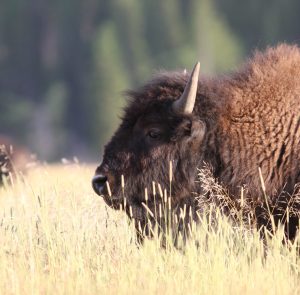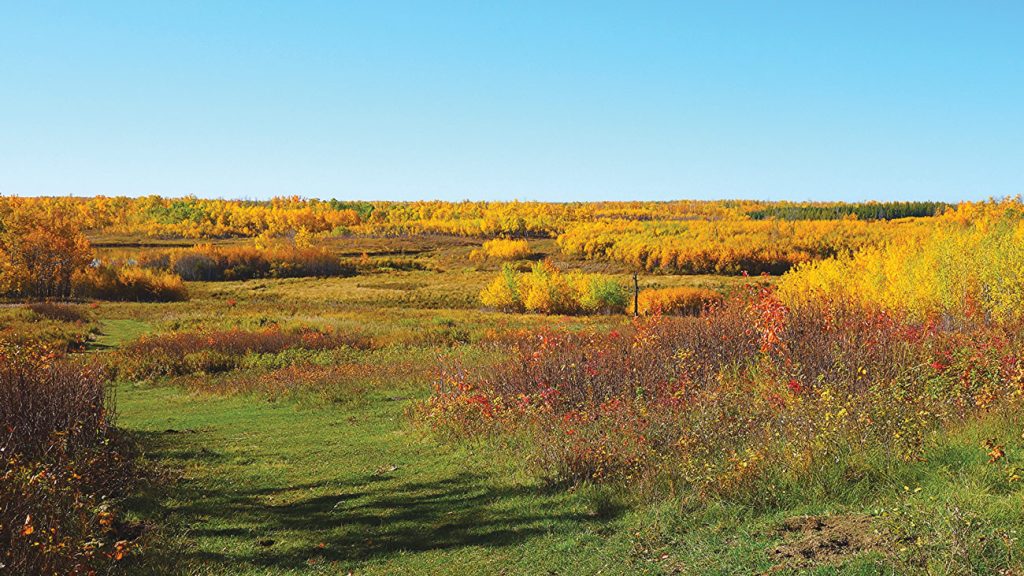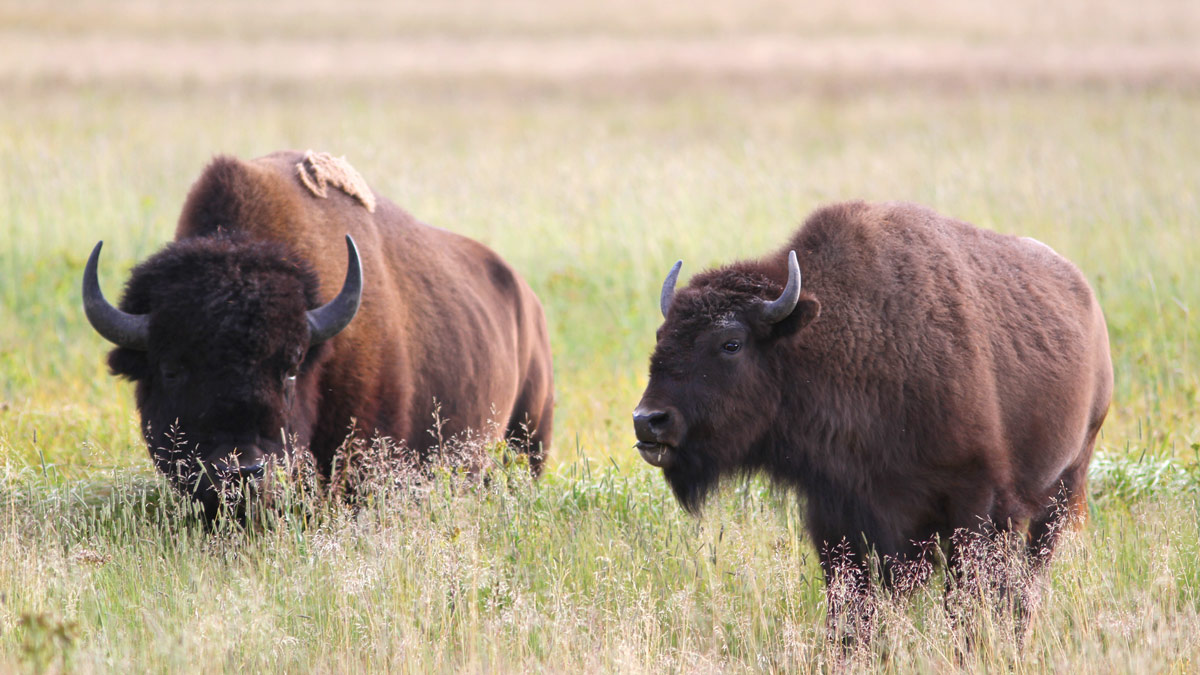Just 35 minutes east of Edmonton on the Yellowhead Highway lies Elk Island National Park, a UNESCO designated biosphere reserve that’s home to two species of bison: the Plains bison and the wood bison, which for a time were almost completely wiped out.
Although the exact number changes from year to year, around 400 Plains bison and 300 wood bison currently live in the park. The Plains bison are slightly smaller than their cousins, but still almost two meters tall at the shoulder and lighter in colour with a shaggy cape, a long beard, a bushy head of hair, and a rounded hump. Wood bison are darker in colour and adapted to the colder climate of the north.They have pointy beards, less hair on their forelegs than Plains bison, and a large, rectangular hump. These bulls are the largest land animal in North America, with some weighing over 900 kg (2000 lbs).

The park, which is in Treaty 6 Territory, has been continuously used by Indigenous people for sustenance, ceremony, trade, and travel since long before the park was founded. Elk Island National Park is a traditional gathering place for many First Nations. With cooperation from Parks Canada, it’s a spiritual (though not permanent) home to Plains Cree, Woodland Cree, Saulteaux, Assiniboine, Dakota, Lakota, Dene/Chipewyan, and Métis people.
It is estimated that at their peak, there were as many as 30 million bison in North America. They roamed the continent in herds numbering up to 100,000. Information plaques in the park state that in their heyday, hundreds of years ago, a single bison herd could cover the area of an entire US state. They thrived in pre-European settlement days because Indigenous people didn’t hunt the bison to near-extinction as settlers did. Instead, they used methods to help them thrive, like burning forests to increase grasslands and grazing grounds.
In the welcome centre, I learned about the huge significance bison hold within First Nations cultures. The park administration, along with providing bison for conservation projects, provides bison to Indigenous groups. To honour the animal’s spirit, they use every possible part: hides, bones, and even ligaments. Traditionally, the bounty was divided up among the hardest-working, bravest individuals and groups. Items made from bison, ranging from hides for shelter and clothing to string made from sinew, were often traded with other First Nations people outside the Great Plains.
In contrast, European settlers and their descendants found the bison meat too costly to transport. They were paid $3.50 each for bison hides, which they stripped from the carcasses, leaving the rest of the animal to rot where it fell. Mass over-hunting with horses and firearms, rather than on foot with traditional tools like spears and arrows, quickly drove the population from millions to just over 1,000 animals in 1906 when the Elk Island conservation program began.
Currently, an estimated 500,000 bison live in North America, including 20,000 plains bison and 11,000 wood bison in protective management in parks. Commercial bison farming has become so successful that bison meat is available for private sale, in some grocery stores, and can be found on the menus of some restaurants. Bison meat has been described as having a richer, sweeter, and more robust taste than beef.
Erin Elliot, the public relations and communications officer for Elk Island National Park, explained that within its boundaries, bison are allowed to roam freely throughout the park. Within Elk Island’s 194 square kilometres of protected areas, there are few predators and few diseases. This allows an incredible experience for park visitors who will often come across bison, elk, bears and other wildlife by the side of the road or in clearings. Visitors can also experience the beauty of the woods, lakes, and islands as they navigate 80 km of trails on foot or by bicycle.

Elk Island National Park
The staff at Elk Island cautions visitors that the park is teeming with wildlife of all shapes and sizes, from the 2-cm long pygmy shrew to the massive, majestic elk that gave the park its name. They estimate that the park holds as many as 600 elk, 300 moose, and 500 deer, as well as bears, cougars, and timber wolves.
Administrative assistant Kay Liew answered a question I’ve wondered about for some time. As a child, I visited Elk Island often, and we always called the animals “buffalo,” while now they are almost always referred to as bison. Apparently, “buffalo” is a term imported to North America from Asia where water buffalo live, and from Africa where African buffalo are found. While both terms are accurate, “bison” is the unique name for the North American animal.
Elliot also noted that the park is the only completely fenced-in national park in Canada. This fence keeps invaders out and park wildlife within a safe zone away from the dangers that loom outside park boundaries. This unique aspect of Elk Island Park has resulted in park animals thriving to the point where they may eventually outgrow the park’s ecological carrying capacity. Parks Canada is preparing a reintroduction program to populate areas all over Canada and the US with bison, elk, and other animals. The park administration has already partnered with Indigenous groups to reintroduce bison to their traditional territories, successfully relocating over 300 bison in partnership with Indigenous groups so far.
We can all take comfort in knowing that these beautiful animals have a future in a place that’s committed to preserving their species and helping to bring them back from the brink of extinction.
Leif Gregersen is an Edmonton-based writer, teacher, and public speaker who has written 12 books. www.edmontonwriter.wordpress.com

